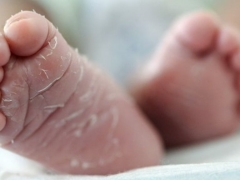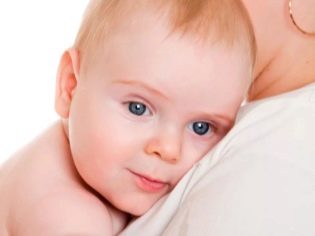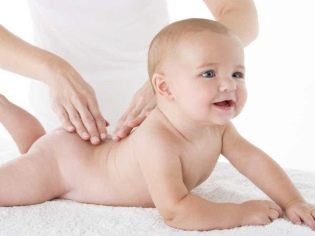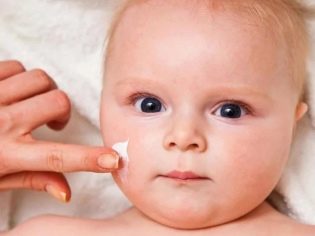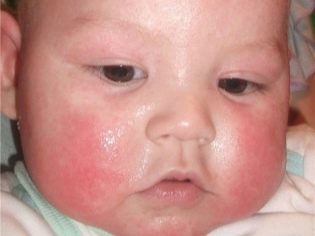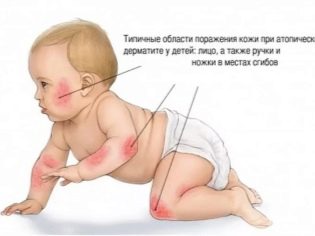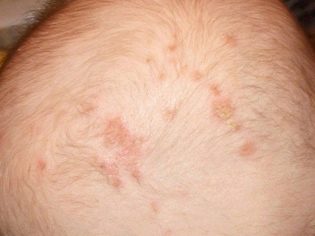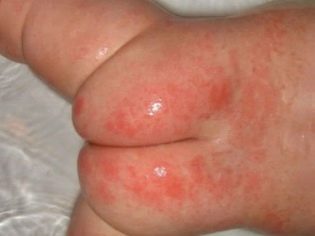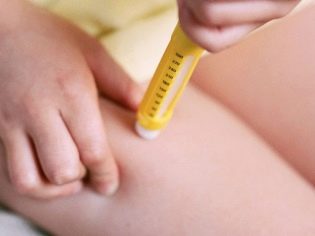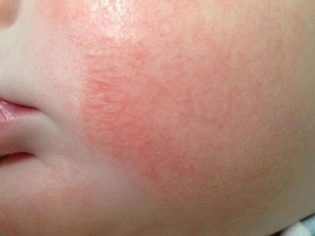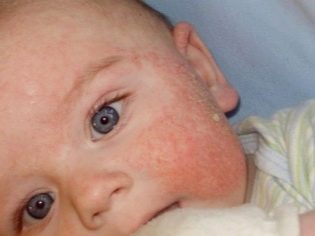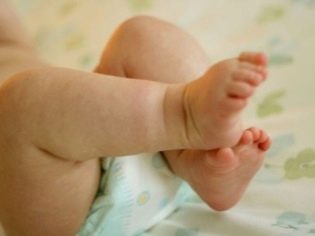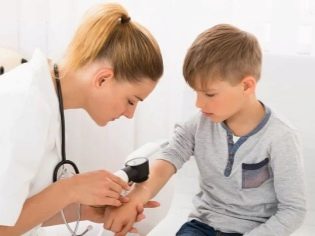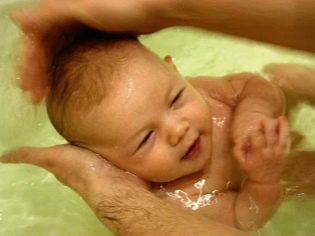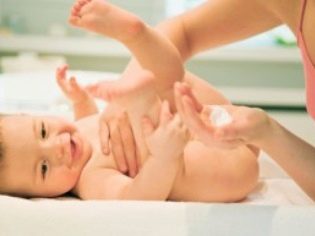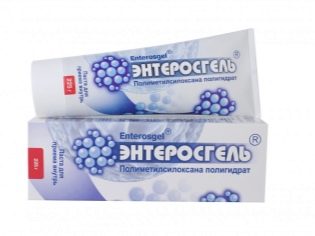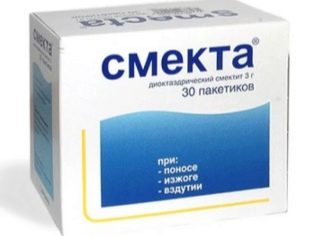Why does a child have dry skin and what to do?
Dry skin does not always indicate the presence of any pathology in the children's body. This condition can be quite physiological. This article will help you to understand when treatment is needed for dry skin in a child.
The reasons
The skin of a child is the largest organ in area, responsible for performing a wide variety of functions. The integuments protect the internal environment from the entry of dangerous viruses and bacteria, perform immune and barrier functions, participate in the synthesis (formation) of a number of biologically active substances. Normally, the skin of children has a pale pink color and moderate humidity. This skin moisture is provided by the work of the sebaceous glands, which produce a special secret.
Evenly distributed on the skin, the greasy secret provides hydration of all layers of the skin. It should be noted that The physiological moisture content of newborns is significantly higher than in older children. This feature is noticeable and visual inspection. Healthy skin on the body of a newly born baby "glows" from the inside. It is soft, smooth, well hydrated. The appearance of dry areas on the skin is often a sign of trouble inside the body.
Moisture of the skin is markedly reduced in winter. Usually, central heating is turned on this season, and the humidity in apartments is noticeably reduced.
Dry and warm indoor air contributes to a change in skin moisture. This situation is explained by the fact that children's thermoregulation is not functioning as efficiently as in adults.
This often leads to skin becoming very dry and rough. The most dry areas at the same time - on the palms and legs, on the back and face, on the elbows. Children aged 5-7 years attending educational institutions often experience dryness on their fingers and hands due to frequent hand washing. Staying in cold or windy weather without gloves and mittens causes the affected skin to crack. This usually happens on the fingers.
In some babies, dry skin can be quite normal. This occurs, as a rule, in the presence of a family or hereditary predisposition. If parents have a tendency to have rather dry skin, then this feature can be observed in children. In this case, treatment is not required, it is enough to use special cosmetics from dryness. To detect increased dryness of the skin in this condition can already have a child in 1-2 years.
Not only physiological causes lead to the appearance of excessive dryness of the skin in the baby. Many diseases of the internal organs also often become causes that lead to a decrease in moisture content in the skin. All infectious diseases occurring with severe dehydration, lead to severe dryness of the skin. In this case, the skin becomes dry on almost all parts of the body: on the face, back, limbs. To eliminate this adverse symptom, it is necessary to replenish the volume of fluid lost during the illness.
If red spots appear on the baby’s skin that itch, then this most likely indicates that the child has signs atopic dermatitis or other allergic diseases. Usually the first signs of allergization occur in babies up to a year. Also, allergic signs on the skin appear when new foods are introduced as complementary foods to the baby’s diet.
Itching of the skin is an extremely unfavorable sign and can occur with a huge variety of very different dermatological diseases.
The appearance of red spots on the priest in infants is often the main clinical sign contact dermatitis. This pathological condition can occur in both boys and girls. It is usually associated with wearing the wrong diapers or using poor quality children's cosmetics for daily hygiene procedures. At an older age, contact dermatitis occurs when wearing clothes made from synthetic materials using aggressive dyes.
Severe dryness of the skin can be not only on the body, but also on the scalp. This manifestation is usually seborrheic dermatitis. It occurs in children at very different ages. The prevalence of seborrheic dermatitis is quite high. When visual inspection, it is easily manifested. On this scalp, with this pathological condition, a large number of easily exfoliated skin scales, dandruff, are formed.
In the youngest babies, dry skin often occurs when violation of hygiene procedures. Excessive bathing of the child and especially long baths contribute to the desiccation of delicate baby skin. For hygiene, just a few minutes is enough. Long-term "steaming" disrupts metabolic processes in the skin, which further contributes to its pronounced dryness. Frequent use of children's cosmetic products can also cause a decrease in the natural moisture of the skin.
The moisture content of the skin depends on the amount of fluid that is contained in the body. If a child receives an insufficient amount of water per day, then this ultimately leads to pronounced dehydration. This condition is most unfavorable in the summer hot season, when a lot of liquid comes out with sweat. To compensate for water and electrolyte balance daily baby should drink the age norm of water.
In the summer and after active physical training, the child should be given a little more to drink.
Chronic diseases of the internal organs often lead to the pathological dryness of the skin. Diabetes mellitus and persistent hyperglycemia cause the skin to become dry and lose its moisture. To eliminate this adverse symptom requires the use of moisturizing cosmetics throughout their later life. Normalizing high blood sugar with medications also helps improve skin moisture.
Hypothyroidism is a pathological condition of the thyroid gland. Reducing the number of peripheral thyroid hormones contributes to the coarsening of the skin and the appearance of dry areas. Severe hypothyroidism is also accompanied by the appearance on the body of multiple edemas and pastosity. To normalize the condition of the skin in this case, it is necessary to treat the underlying disease that caused the hypothyroidism.
In children aged 4-6 years of age, various worm infestations often lead to the appearance of dry skin. It should be noted that these diseases can also occur at any age.
Parasites living in the gastrointestinal tract, in the course of their vital activity, emit a large number of toxic products that cause a child's metabolic disturbances in the skin. This leads to the fact that the skin looks too dry and dehydrated.
The appearance of dry areas behind the ears is often not evidence of the presence of any pathology in the children's body. This phenomenon in many cases is associated with improper hygienic care of the baby. Quite often, this condition can be observed in babies of the first months of life. Vomit, falling on the face and neck during regurgitation, can cause irritation, and then increased dryness. In order to avoid this, withIt should be regularly removed vomit from the skin and wipe it with a clean gauze cloth.
Almost every mother is familiar with the appearance of pink spots on the cheeks of a child. This condition occurs in many babies during the introduction of new unfamiliar products into their diet. If the food component has an allergenic property, then this quite often leads to the appearance of this symptom in the child. Redness occurs, as a rule, on both cheeks simultaneously.
If such an allergic reaction to the introduction of a new food into the diet occurs, it is necessary to consult with your doctor.
What does it look like?
Dry skin can occur on a wide variety of anatomical areas of the body. They are found both on the scalp and on the feet. The color of the skin may not be changed. Healthy skin in a child has a pale pink color. When feeling the damaged areas of the skin is defined severe dryness. In some areas, a large number of desquamated epithelial cells can form that look like scales or dandruff.
Allergic states usually appear as itchy red spots. They may persist on the skin during the period of the causative allergenic factor. In some cases, these spots remain on the skin for several days or even weeks. After their disappearance, modified dry areas remain on the skin. They can easily crack and inflame.
Severe dryness of the skin is clearly visible in newborns and infants. After a long hygienic bath, this symptom is greatly enhanced. Moisturizing baby creams are usually quickly absorbed into dry skin within a few seconds. The duration of the effect of the use of such cosmetics is usually short.
Home treatment
The tendency to dry skin is not in all cases a pathology. This may be quite physiological individual feature of the organism. If skin dryness appeared suddenly or noticeably increased, then this is a significant reason for seeking help from a specialist.
Children's dermatologists deal with the problems of skin pathologies.
In some cases, it is enough for them to conduct only a clinical examination to establish a diagnosis, and sometimes a full-fledged expanded complex of various diagnostic methods is required.
If, after the examination of the doctors, no pathologies are found in the child, leading to increased dryness, then the moisture of the skin can be normalized independently, at home. To do this, use the following tips:
- Limit frequent bathing baby. Long baths reduce skin moisture and increase dryness. They should be carried out only for hygienic purposes. If your baby has signs of atopic dermatitis, you can add various antiseptic preparations or decoctions of herbs to bathing water, which have a beneficial effect on the skin. These include: chamomile pharmacy, series, calendula and others.
- Choose only cosmetics specially designed for children. The composition of these funds should not be aggressive chemical fragrances and dyes, which can cause allergic reactions on the delicate skin of the child.Choose cosmetic products that have been tested in the laboratory and have special markings that allow them to be used from the very first months of birth.
- Do not overdry skin. This rule is very important to observe in infants and newborns. Try to dry your skin with blotting smooth movements. All textiles that touch the skin of a newborn baby should be made of quality materials.
- Limit the use of baby powder. Often parents use this tool too much. Such improper use contributes to severe dryness in the area of the anogenital zone. This increases the likelihood of contact dermatitis in the future.
- Control your baby’s diet. Introduction to the menu of new foods, and at an older age - unfamiliar food, is often the cause of the appearance of allergic forms of skin pathologies. Sweets, chocolate, seafood, citrus fruits and various sweet carbonated drinks can cause an allergic exacerbation in a child that will certainly affect the skin.
- Keep track of your health baby Kids with endocrine diseases must be observed by an endocrinologist. In the diet of children with diabetes should be carefully monitored the amount of sugar entering the body and the level of glucose in the blood.
- Do not forget to hold the baby air baths. After removing the diaper and skin treatment, leave the skin in the air for a few minutes. Many parents are afraid that at this time the child may overcool and get sick. To worry about this is not worth it! If the temperature in the room is comfortable enough, then nothing dangerous will happen to the baby.
- Do regular wet cleaning in the children's room. If the child has a tendency to increased dryness of the skin, then parents should carefully monitor the humidity in the room. By reducing this indicator, you can use special room appliances - humidifiers. They help to maintain optimal indoor microclimate indicators.
Drug therapy
Prescribe therapy for dry skin should only the attending physician. In many cases, parents choose drugs intuitively or on the advice of friends. It is not recommended to do this, as each child is unique and has its own individual characteristics and pathologies. Before prescribing therapy, the doctor will examine the baby and establish the correct diagnosis. This is necessary for the selection of the optimal treatment regimen.
To eliminate the pronounced dryness of the skin of the doctor, the following medicines are used:
- Enterosorbent preparations. They are prescribed for various forms of allergic conditions, as well as for certain gastrointestinal pathologies of various genesis. As sorbents in children's practice are used: activated carbon, "Smecta», «Enterosgel" other. These funds help to cleanse the child’s body of toxins accumulated during the period of illness.
- Hormonal creams and ointment. Issued only under strict indications. Independent use is unacceptable, since these funds can cause a whole range of various side effects during prolonged systemic use. These drugs perfectly eliminate the increased dryness of the skin, are well distributed and also have anti-inflammatory effect.
- Moisturizing body lotions. Appointed according to the age of the child. The components contained in these products penetrate well and have a positive effect on the water-lipid layer of the skin. These cosmetic products are usually used after hygiene procedures at bedtime.
- Calcium preparations. Discharged with severe atopic dermatitis. Appointment of these drugs pediatric dermatologist. Written out these funds for exchange rate.
- Antihistamines. These funds eliminate pronounced itching, and also have a systemic anti-inflammatory effect. These include: "Claritin"," Suprastin "," Zyrtec ","Loratadine" other. The use of these funds is also a good prevention of new exacerbations of allergic skin pathologies. Discharged mainly on the exchange rate.
Prevention
To prevent severe dryness of the skin should be very carefully monitor the health of the baby. Newborn babies and babies require a more careful approach. The appearance on the skin of any adverse symptoms should be a signal for parents to go to the doctor with the child.
Do not abuse home self. In some cases, it can only aggravate the general condition of the baby.
To keep baby’s skin healthy, the following prevention measures should be observed:
- Process the room regularly in which there is a child. Wet cleaning should be done daily in the children's room of allergy sufferers. As a disinfectant, you should choose products that do not contain pronounced perfume fragrances. Wet cleaning can also be carried out without the use of chemical components.
- Reduce possible exposure risks in the child's body various allergens. This measure is necessary especially for kids with allergies. All “cross” allergens should also be completely excluded. For the prevention of allergic exacerbations, antihistamines should be used, but with mandatory prior consultation with your doctor or pediatric allergist.
- Do not go out with the child in very windy weather. without the use of special protective cosmetics. For older children, it is necessary to apply a children's hygienic lipstick and a protective face cream. Hands of the child must be hidden in warm mittens or gloves.
- Pick up diapers with regard to individual sensitivity. Not every brand is suitable for a particular baby. Some components that make up the absorbent material of the diaper can cause manifestations of contact dermatitis in a child. Any redness or severe dryness of the skin in the anogenital zone should be the reason for changing the type of diaper.
About what should be a children's room, which will help to avoid problems with the skin in the future, see the following video.
